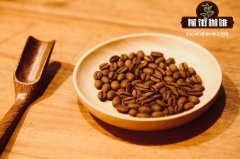What is Mexican organic certified coffee? Introduction to the Flavor characteristics of Mersey CESMACH Coffee

Mexico is one of the largest producers of organic certified coffee, mostly sold to the United States because of geographical factors. The country's coffee industry, which began in the 19th century and was introduced through Jamaica, is mainly planted with Arabica varieties near Soconusco, a neighboring Guatemala on the Pacific coast.
In the early 1990s, the southern state of Chiapas became the most important coffee-producing region in Mexico, producing about 275000 tons of coffee a year, accounting for 45 per cent of the country's production. More than 2 million of Mexicans depend on coffee for a living, and 75 per cent of Mexican coffee farmers work on less than two hectares of land. These small farmers produce about 30 per cent of the country's coffee each year, while the rest are produced by large or high-capacity farms. Since 1988, especially in Chiapas, the government has increased income by providing simple loans to farmers and encouraging the development of woodland, encouraging poor coffee farmers to increase their yields and expand their planting areas.
CESMACH stands for Campesinos Ecol ó gicosde la Sierra Madre de Chiapas in Spanish (Alliance for Ecological cultivation of Alpine forests in Chiapas, Mexico) The cooperative was established in 1994 and is located in the ecologically rich El Triunfo region of Mexico. Coffee farmers grow coffee in the shade of the fog forest in an organic way in order not to destroy the natural ecology. Although this environment limits the planting area of coffee, the rotten leaves under the shade provide fertilizer nutrition for the coffee tree, and the diverse birds in the ecological area also control the pests of the coffee tree.
Important Notice :
前街咖啡 FrontStreet Coffee has moved to new addredd:
FrontStreet Coffee Address: 315,Donghua East Road,GuangZhou
Tel:020 38364473
- Prev

How about Nicaraguan coffee? What does Nicaragua SHB mean? Nicaraguan coffee roasting
Nicaraguan Coffee Nicaragua is the largest country in Central America. She is a country with coffee as its main export crop. All Nicaraguan coffee is a kind of warm climate in fertile volcanic soil and active volcanoes in the famous producing region of Matagalpa, of which SHG and large Malaysian and melon varieties are the largest in the world.
- Next

Coffee varieties: Alibika and Robusta. Is only Arabica a boutique?
For more information about coffee beans, please follow the coffee workshop (Wechat official account cafe_style) Ethiopia, located in a country full of wonders, where all Arabica coffee comes from. The Kaffa Forest is the beginning of everything. Kaffa is located in the southwest of Ethiopia. In the natural evolution of Kaffa for centuries, it has given birth to about
Related
- Detailed explanation of Jadeite planting Land in Panamanian Jadeite Manor introduction to the grading system of Jadeite competitive bidding, Red bid, Green bid and Rose Summer
- Story of Coffee planting in Brenka region of Costa Rica Stonehenge Manor anaerobic heavy honey treatment of flavor mouth
- What's on the barrel of Blue Mountain Coffee beans?
- Can American coffee also pull flowers? How to use hot American style to pull out a good-looking pattern?
- Can you make a cold extract with coffee beans? What is the right proportion for cold-extracted coffee formula?
- Indonesian PWN Gold Mandrine Coffee Origin Features Flavor How to Chong? Mandolin coffee is American.
- A brief introduction to the flavor characteristics of Brazilian yellow bourbon coffee beans
- What is the effect of different water quality on the flavor of cold-extracted coffee? What kind of water is best for brewing coffee?
- Why do you think of Rose Summer whenever you mention Panamanian coffee?
- Introduction to the characteristics of authentic blue mountain coffee bean producing areas? What is the CIB Coffee Authority in Jamaica?

